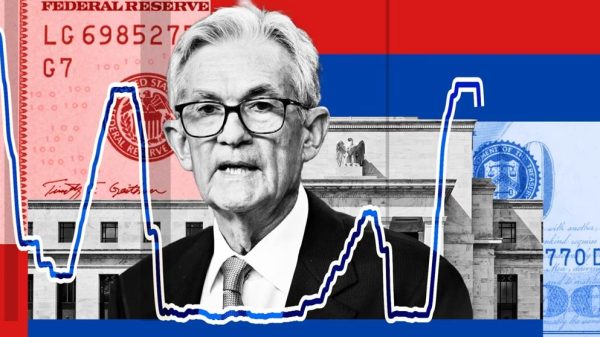U.S. Treasury yields climbed on Wednesday as investors assessed the potential economic fallout of President Donald Trump’s recently imposed tariffs on imports from Canada, Mexico, and China. The tariffs, which include 25% duties on goods from Canada and Mexico and an additional 10% on Chinese imports, have sparked uncertainty across global markets.
At 6:20 AM ET, the benchmark 10-year Treasury yield increased by more than 3 basis points, reaching 4.244%, while the 2-year Treasury yield rose by more than 1 basis point to 3.972%. For context, one basis point equals 0.01%, and bond yields move inversely to their prices.
Market Reaction to Tariffs
The tariffs, which came into effect on Tuesday, have prompted retaliation from Canada, Mexico, and China, heightening fears of a potential trade war. Each of these trading partners has indicated plans to implement countermeasures against U.S. goods.
While the tariffs aim to strengthen U.S. manufacturing and reduce trade deficits, they have created significant uncertainty for businesses. The higher costs of imports could weigh on corporate profits, disrupt supply chains, and potentially slow down economic growth.
Commerce Secretary Howard Lutnick suggested that a compromise with Canada and Mexico might be feasible, but President Trump appeared undeterred, stating in an address to Congress that the administration was prepared to weather a “little disturbance” caused by the levies.
Economic Impact and Investor Concerns
Market analysts have voiced concerns about the broader implications of the tariffs. Strategists at BCA Research warned that the administration’s willingness to endure short-term economic disruptions could lead to a 10%-15% decline in equity markets. They also noted that policy uncertainty is already dampening business activity, potentially slowing investment and hiring decisions across key industries.
The tariffs come at a time when investors are closely monitoring other economic indicators. On Wednesday, the release of the ADP Employment Change Report and the Purchasing Managers’ Index (PMI) for the previous month are expected to provide insight into the health of the U.S. economy. These data points will be critical in gauging whether the economy can sustain its momentum amid escalating trade tensions.
What’s Next for the Markets?
The rise in Treasury yields reflects growing caution among investors, who often turn to bonds as a safe haven during periods of economic uncertainty. However, the increase in yields also signals the market’s anticipation of potential inflationary pressures stemming from higher import costs.
As the U.S. economy navigates this challenging period, markets will remain volatile. Investors will continue to watch for further policy developments, including any signs of compromise in trade negotiations or additional retaliatory measures from affected nations.
For now, the tariffs have added a layer of complexity to an already uncertain economic landscape, leaving businesses and investors grappling with the potential consequences of a prolonged trade standoff.











